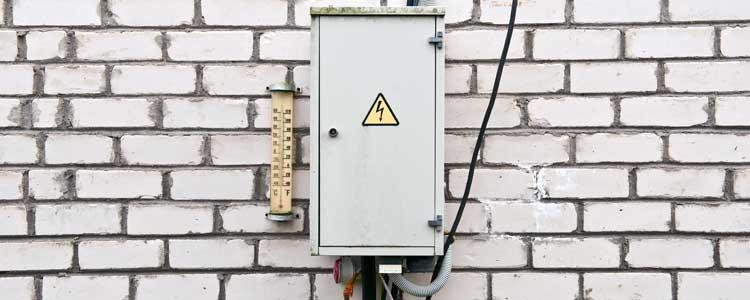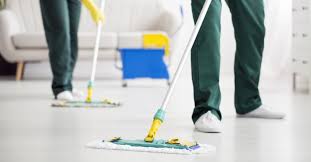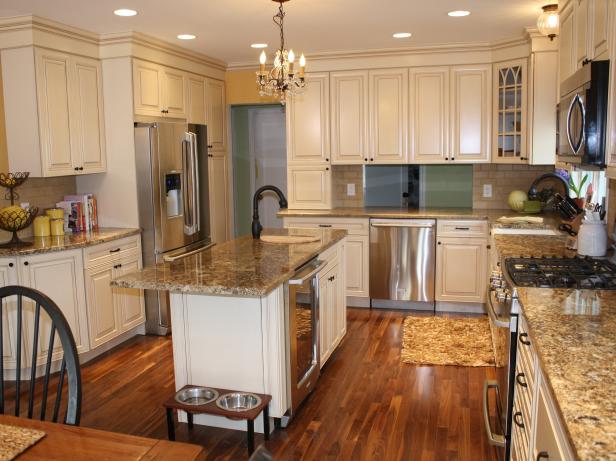Should I Upgrade My Electrical Panel? 10 Reasons to do it.
Should I upgrade my electrical panel? The electrical panel remains one of the most essential components of the house. The electrical panel brings comfort and convenience to the residents in the form of electricity. This device is responsible for providing power throughout the entire house. After some time, the electrical panel becomes old or outdated. At this point, you are faced with the question: should I upgrade my electrical panel? There are various kinds of electrical panel upgrade. You can upgrade electrical panel to 200 amps. You can also replace fuse box with breaker panel. Continue reading to discover more about electrical panel replacement and upgrade.
Why Should I Upgrade My Electrical Panel?
Various reasons why you may need electrical panel upgrade include:
- Your Home is Old
Old residential apartments offer cozy and retro atmosphere. This is not present in a modern home. However, these older apartments with obsolete electrical panels may not be able to support your modern electrical needs. If your old home has a 60-amp electrical panel, you may need to upgrade electrical panel to 200 amps. This way, you can use modern electrical equipment you need.
- Introduce New Appliances
Furthermore, outdated electrical panels may not be able to handle the workload required to power an entire home of new major appliances. This includes your refrigerator, air conditioning unit, hot tub, dryers, water heaters, and washing machine. The majority of these electrical appliances require a 240V circuit. If you want to introduce new appliances, electrical panel replacement or upgrade will be a good idea.
- Replace Fuse Box with Breaker Panel
What’s more, fuses have become outdated. Circuit breakers are now more efficient. They do not trip off due to overload. An electrical panel replacement offers you an excellent opportunity to replace fuse box with breaker panel. In case you are wondering why should I upgrade my electrical panel? Then, you may need to do so to replace your fuse-based electrical system with circuit breaker.
- Prevent Potential Electrical Fires
Over time, over-crowded connections can turn to loose connections. Thus, causing a wiring fault which can potentially lead to electrical fires. Electrical panel upgrade can help prevent possible electrical fires.
- Ensure Steady Flow of Electricity
Additionally, a new electrical panel will help ensure the steady flow of electricity. With this, you don’t have to worry about issues of burnt out appliances and flickering lights. If you are still wondering why should I upgrade my electrical panel? This may be a good reason to.
- Add More Appliances
From time to time, you may need to add more electrical appliances to your home. If you replace fuse box with breaker panel, you can easily add even more appliances to your home. Also, you don’t have to worry about blowing any fuse, tripping your breaker, or damaging your current appliances.
- Expect Fewer Power Surges When You Upgrade Electrical Panel to 200 amps
Furthermore, electrical panel replacement or upgrade also prevents recurring power surges. If you upgrade electrical panel to 200 amps, you can anticipate fewer power surges. Thus, adding more years on your current devices.
- Reduce Homeowner Insurance
In addition, electrical panel upgrade can help in reducing your homeowner’s insurance bill. When you replace fuse box with breaker panel, your home becomes safer. Hence, you will qualify for a discount on your annual bill. You will also benefit from rebates and discounts from the local electrical company. In case you are wondering why should I upgrade my electrical panel? Then, a reduction in your homeowner’s insurance is a great reason to.
- Save Cost
Moreover, scheduling an electrical panel upgrade will help save cost. A new panel runs more efficiently. Hence, when you update your electric panel, you can save you money on your electric bill every month.
- Increase Your Home Value
Lastly, electrical panel upgrade can help increase the value of your home. These new breaker panel and switchboards are aesthetically pleasing. It will increase the value of your home. It will also give you the peace of mind that the electrical panel is not the hazard it once was.

Electrical Panel Upgrade Definition:
Electrical panels divide incoming electrical power from the grid into subsidiary circuits to distribute power throughout the building. With a 25-40 year lifespan and an ever-growing reliability on electricity, these panels need upgrading and replacement.
Breaking Down an Electrical Panel Upgrade:
When to Consider Upgrading Your Electrical Panel? There are two scenarios when you should consider upgrading your current electrical panel.
The first is if you are experiencing electrical problems in your home. If you notice flickering lights or you have to turn off one appliance to use another, then the circuit breakers on the electrical panel could be overloaded. This will lead to your breakers tripping often or eventually failing to trip and overheating. This can cause irreversible electrical damage from wires melting and potentially catching fire on the side of your home.
The second scenario when you should consider upgrading your electrical panel is if you are looking to expand your electricity demand in your home. Some examples of this include getting a hot tub, installing an HVAC system, or installing a solar system on your roof. During these home improvement projects is a good time to visit upgrading your electrical panel both from an efficiency and safety perspective.

Give Your Home An Electrifying Upgrade
What’s the capacity of your service panel?
Electrical panels are one of those things that just work until they don’t. Most homeowners know how to reset a circuit breaker that trips, but few people besides electricians give the industrial grey box in the garage or laundry room much thought until the lights go out.
Next time you’re near your service panel, take a look inside. There will be one large breaker separate from the others. It should be marked as 80 Amp or higher. This is the maximum capacity of your entire home’s electrical system, in amps.
Why do amps even matter?
Amps are a measure of how much electricity can flow through a circuit. Your home is divided into multiple circuits, which all meet at the service panel.
Both the individual circuits and the master service panel have a limit to how much electricity can flow through them before they overheat.
Circuit breakers in the main panel cut power to individual circuits if they start to draw more current than is safe.
But most older breaker panels can’t handle anywhere close to the sum of all your home circuits. So on an older breaker panel, when you plug in a hair dryer, a coffee pot, then somebody goes to make toast, it’s lights out. Too much power has been drawn from the whole system, even if no single circuit was overloaded. The culprit is a low capacity service panel.
Advantages of a 200 Amp Service Panel
Safety
An upgraded service panel can let your home electrical system use more power safely. Even if you aren’t tripping the breakers right now, a 100 amp panel in a modern home is running far too close to capacity to be safe for long term use.
As a rule, no electrical circuit should sustain loads of more than 80% the maximum capacity. The extra amperage capacity is a safety buffer electrical engineers build into home circuits so that a sudden power spike doesn’t dangerously overload wires and outlets.
This means that in a 100 amp system, you shouldn’t draw more than 80 amps. Out of this capacity, 15 to 20 amps will be used for home lighting. Another 20 amps will be used for an air conditioner or heater.
Before you’ve even turned a radio on, that’s halfway to your home’s safe capacity. Add a few computers , smartphone chargers, a television, and youre evening power draw will be easily over the safe limits of the system.
What happens then? A best case scenario is a breaker trips when the system hits the absolute limits of the system’s safe working capacity. In an older system, it’s also possible that an electrical fire could be sparked by an overloaded outlet or light fixture.
More Circuits
Even if your current system has a total capacity to meet your home’s needs, the individual circuits are often limited. Smaller service panels have less room for circuits, and those circuits are usually rated for lower amp draw than larger panels.
This can come in handy in a couple of ways.
By dividing your house into more circuits with less things attached, you can run more gadgets on the same electrical capacity.
This can really come in handy if you ever use power tools. Having your workshop split across two circuits can let you run larger tools, and if you ever work on projects with a friend or your kids, it can let you run multiple shop tools at once without overloading any circuits.
Room to Grow
If you’re considering any major home upgrades like a backyard pool or a basement bar, upgrading to a 200 amp service panel will give your power to spare. It’s also a good starting point if you’re planning to upgrade your office or home theater, which can be major power sinks even with modern equipment.
Upgrade your service, not just your panel!
After your service panel is upgraded, there’s a step you can take to get even higher performance from your home electric system.
Just by upgrading to a 200 amp panel, you’ll be able to take full advantage of your 100 amp service without losing 20% to safety limits.
If you want even more power, most homes can be switched to higher amp service. This can give you a safe working capacity of 160 amps in your home, with a 40 amp reserve for high-draw situations like Christmas lights or an electric snowblower.
How much power do you need?
200 Amps is the minimum recommended service panel size in full size modern homes. Some situations will require significantly more. Larger homes or homes with a machine shop or car lift in the garage can require as many as 400 amps. It’s best to ask your electrician for advice on this, but this formula can give you a ballpark idea of what you need:
- Multiply your living space in square feet by 3. This is your lighting and electrical outlet needs (in watts)
- Add 1500 watts to that for each circuit that mainly runs appliances, like in laundry rooms and kitchens.
- Add the real wattage of any dedicated circuits, like air condtioners and pool pumps.
- Set aside the first 10,000 watts. Find 40% of what’s reamining, and add that to 10,000. This is how many watts your home will draw.
- Divide your calculated watts by 230. The quotient is how many amps your service panel must provide to safely meet your energy needs.
- Now, remember what we said about 80% being the maximum safe capacity. If you calculate a number higher than your current service panel, an upgrade is in order. But if that number is greater than 80% of your current panel’s maximum capacity, an upgrade will stbill be needed for safety purposes.

Understanding Your Home’s Electrical Load
You don’t need to be an electrician to know the capacity of your home’s electrical load. Brush up on some basic knowledge about fuse boxes and service panels that will help you use energy safely and efficiently.
A basic understanding of your home’s electrical load is important knowledge for homeowners. After all, there will certainly come a time in your home’s life when you’ll need to shut off or restore power. We’ll walk you through four key tools for working with electrical loads: how to evaluate your home’s load, how to add capacity, how to understand the size of your load, and how to inspect a service panel.
Evaluate Your Home’s Power Load
Different homes need different amp services. A 60-amp service is probably inadequate for a modern home. A 100-amp service is good for a home of less than 3,000 square feet that does not have central air-conditioning or electric heat. A home larger than 2,000 square feet that has central air-conditioning or electric heat probably needs a 200-amp service. Use the equation listed above to deduce exactly how many amps your home needs.
Add Capacity to Your Load
Installing a new circuit is not difficult, but before you begin, make sure your service panel can handle the extra load. A service panel with too many circuits is dangerous.
Fuse boxes rarely have space for new circuits. If you have a fuse box and need new service, replace the fuse box with a new service panel or install a subpanel.
If you see an available slot in a breaker box, either an open space or a knockout that can be removed, chances are you can simply install a new breaker there and run cable to it. If there is no open space, local codes may allow you to replace a single breaker with a tandem breaker, which supplies power to two circuits.
Make sure you do not overload your service panel. A panel’s total amperage is printed near or on the main circuit breaker, which controls all the circuits in the panel. Most breaker boxes are 100, 150, or 200 amps. Add the amperages of all the individual breakers in the box. The total may be more than twice the total amperage of the box. For example a 100-amp service panel may have circuit breakers that add up to more than 200 amps. This is normal.
Take your total amperages and the name of the service panel manufacturer with you to meet with the inspector to ask about adding another circuit. Or compute your home’s power needs.
Know the Right Size:
It’s also important to know the size of your electrical load box. A small, 60-amp fuse box may be found in an older home that has not had its wiring upgraded. It can supply power to only one 240-volt appliance and is probably inadequate for a home of 1,200 square feet or more.
- Medium-Size Service Panel
A 100-amp service panel provides enough power for a medium-size home, even if it has several 240-volt appliances and central air-conditioning.
- Large-Capacity Service Panel
Many newer homes and some older large homes have a 150- or 200-amp service panel.
How to Inspect a Service Panel
A service panel should be located where adults can get to it easily but children can’t. Any exposed cables leading to it should be firmly attached to the wall and clamped tightly to knockout holes in the panel. If there are any open holes, cover them with a knockout plug (available at hardware stores).
If a 14-gauge wire is connected to a 20-amp circuit breaker or fuse, replace the breaker or fuse with one that is 15 amps to prevent the wire from overheating. In most cases, a 20-amp fuse or breaker should connect to a 12-gauge wire; a 30-amp fuse or breaker should connect to a 10-gauge wire.
Wires should run in a fairly orderly way around the perimeter of the panel. If you find a hopeless tangle, call in an electrician for an evaluation. Also call in a pro if you find melted or nicked wire insulation, any signs of fire, or extensive rust.
In an older home there’s a good chance that new wiring has been added to a service panel. It may have been done by a pro, but it could be amateur work too, so check all the connections.
Understanding Electrical Capacity
Calculating how much power your home needs is a matter of calculating the amperage load of all the various appliances and fixtures, then building in a margin of safety. Generally, it’s recommended that the load never exceeds 80 percent of the electrical service’s capacity.
To use the math, you need to understand the relationship between watts, volts, and amps. These three common electrical terms have a mathematical relationship that can be expressed in a couple of different ways:
Volts x Amps = Watts
Amps = Watts/ volts
These formulas can be used to calculate the capacity and loads of individual circuits, as well as for the entire electrical service. For example, a 20-amp, 120-volt branch circuit has a total capacity of 2,400 watts (20 amps x 120 volts). Since the standard recommendation is for the load to total no more than 80 percent of the capacity, this means that the 20-amp circuit has a realistic capacity of 1920 watts. So to avoid the danger of overloads, all the light fixtures and plug-in appliances together on this circuit should consume no more than 1,920 watts of power.
It is fairly easy to read the wattage ratings of all the lightbulbs, television sets, and other appliances on the circuit to determine if a circuit is likely to overload. For example, if you routinely plug a 1500-watt space heater into a circuit, and run several light fixtures or lamps with 100-watt bulbs on the same circuit, you have already used up most of the safe 1920-watt capacity.
The same formula can be used to determine the capacity of the house’s overall electrical service. Because a home’s main service is 240 volts, the math looks like this:
240 volts x 100 amps = 24,000 watts
80 percent of 24,000 watts = 19,200 watts
In other words, a 100-amp electrical service should be expected to provide no more than 19,200 watts of power load at any given time.






















